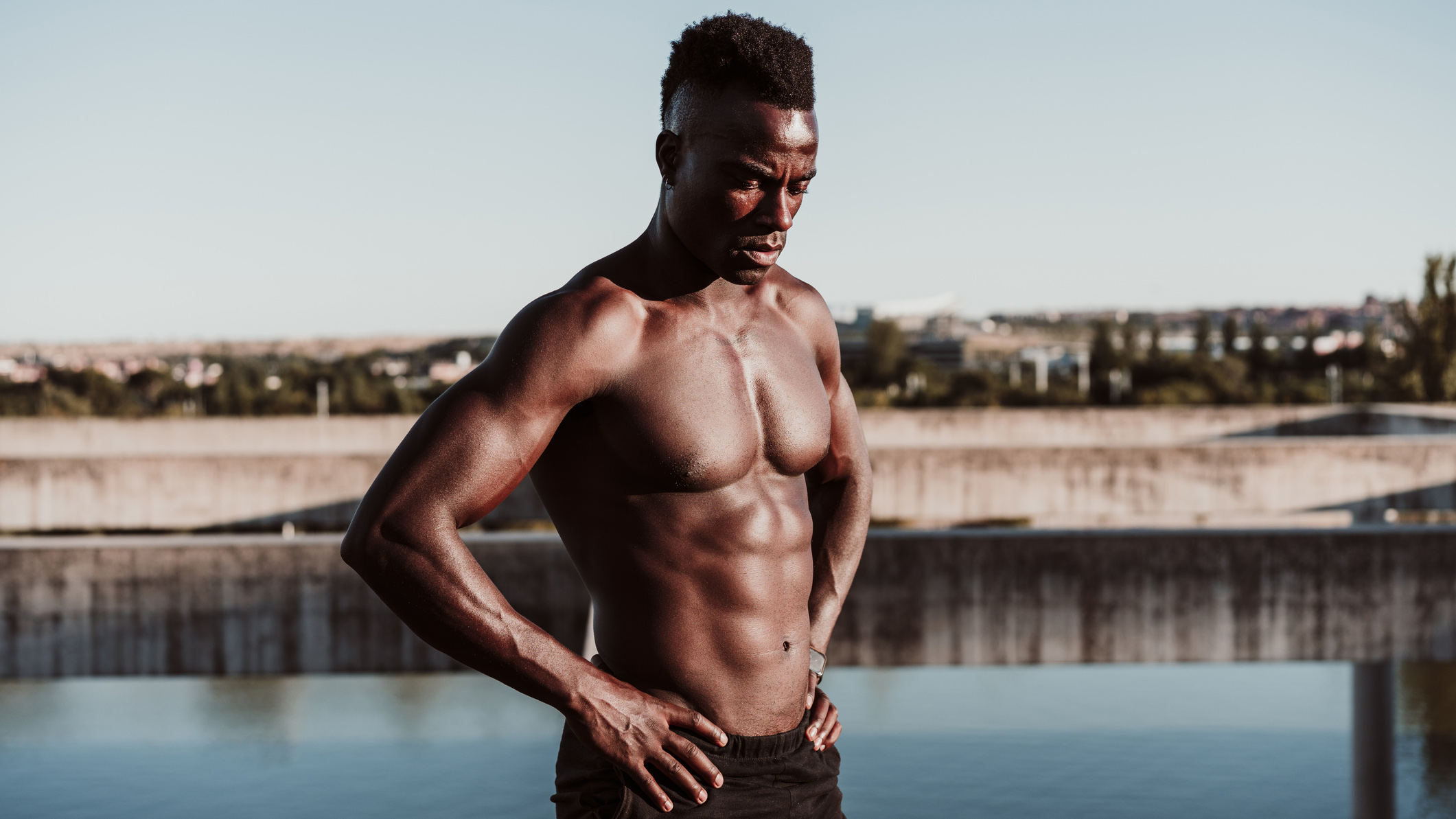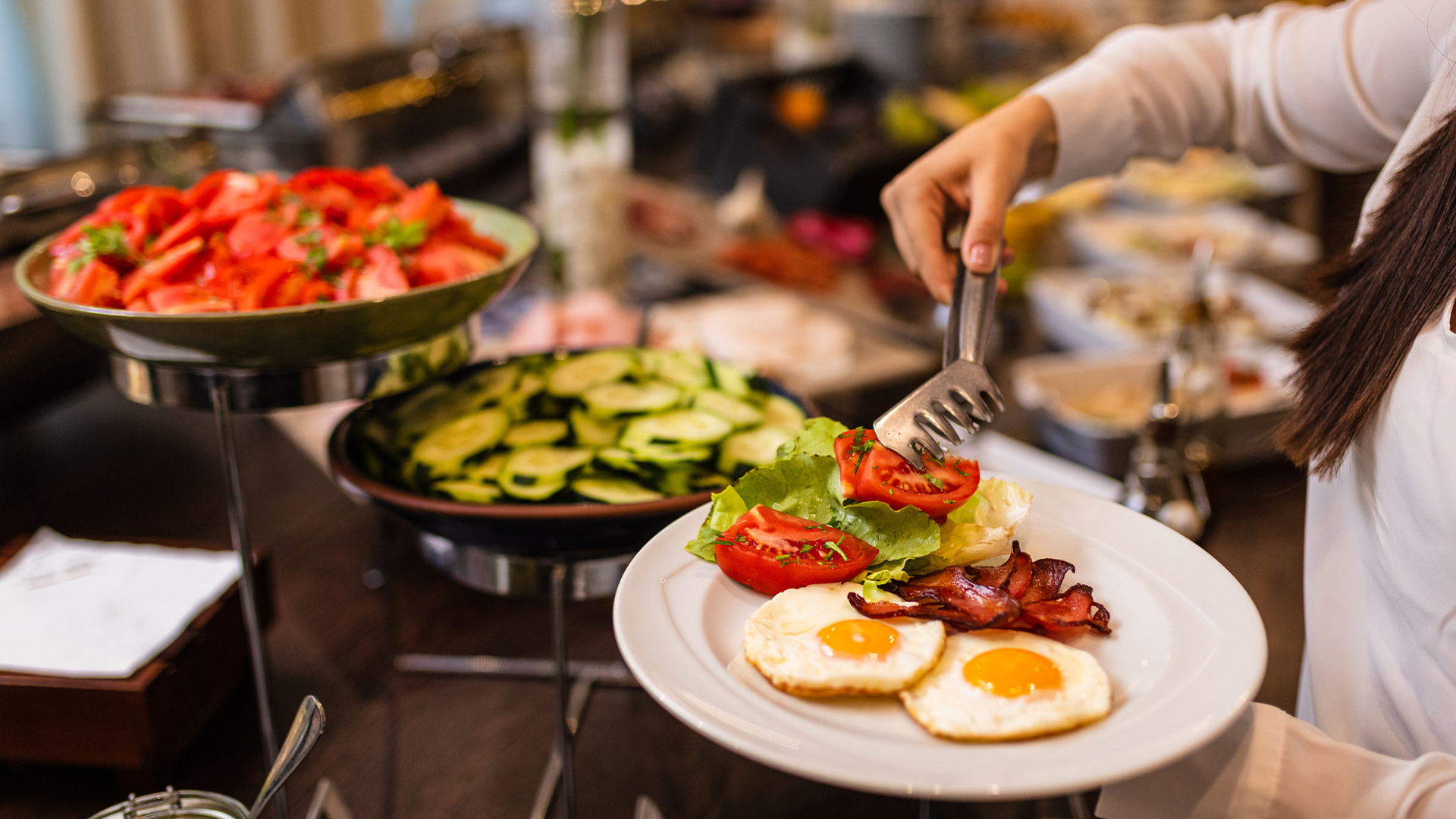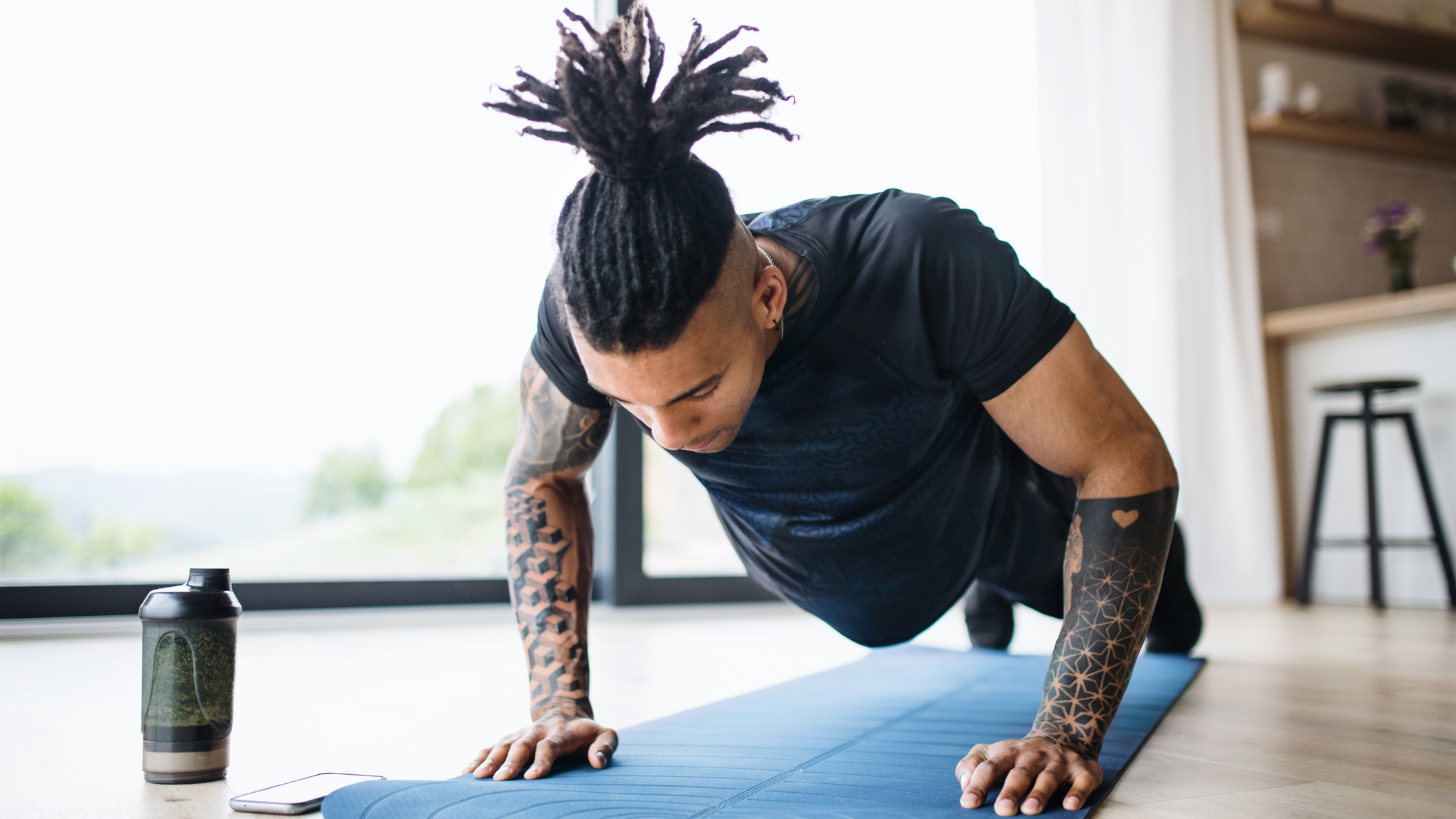How to lose belly fat – 8 tried and tested methods to rid abdominal flab for good
Best diet and workout tips to help you lose weight, especially belly fat


It's far from impossible to lose weight considerably fast from around your waist by introducing basic lifestyle changes and exercises into your life, most of which we aim to explain in this article. The below tips can help shift stubborn belly fat and can set you on a more sustainable weight loss journey. Ready to get fit for 2023 and reduce the circumference of the pot belly stomach of yours? Let's get going.
If you're here because you want to know how to reduce tummy size in seven days or drop belly fat fast, we'd advise you to try neither. Fad diets promise all sorts of quick results, but very often, initial weight loss results from your body ridding itself of water, which, as soon as you stop 'dieting', will reappear just as quickly as it disappeared. Sustainable weight loss – and, therefore, long-term belly fat loss – is only possible if you allow your body time to adjust and adapt to your new lifestyle.
Finally, we have a few guides for those who seek weight loss tips in general (how to lose weight), people who consider themselves too lazy to lose weight (how to get fit when you're unfit) and even individuals who are happy to go the extra mile to reveal their abs (how to get a six-pack). Whatever you will do, remember to be sensible and if you have any concerns, consult a medical professional before you change your diet or exercise routine.
How to lose belly fat – Subcutaneous fat isn't the enemy
Belly fat is sometimes referred to as visceral fat, which surrounds the organs in the abdominal cavity. Visceral fat is more dangerous (and often invisible) than subcutaneous fat, the latter of which is fat under your skin. Luckily, you don't have to do anything special to visceral fat; once you start eating healthier and moving around more, you'll lose visceral and subcutaneous fat.
We want to point out that some subcutaneous fat could be beneficial and that most people don't need to walk around with a six-pack. Subcutaneous fat is an energy reserve your body uses to balance your energy input and output. A dangerously low body fat percentage can cause an imbalance in your body, resulting in several illnesses. On the other hand, too much subcutaneous fat can also make you ill.
We recommend being sensible and not chasing quick and dramatic weight loss goals to achieve unattainable beauty standards. Some subcutaneous fat is good for you, and you shouldn't feel uncomfortable in your skin for having some. With that in mind, let's talk about the best way to reduce body weight – especially fat – in a sensible, sustainable way!
How to lose belly fat
1. Make better food choices
It probably comes as no surprise that in order to lose belly fat, you'll need to change your diet slightly. We don't recommend going cold turkey and switching from eating pizza every night to not eating anything all day; instead, try swapping food and drinks out gradually.
Get all the latest news, reviews, deals and buying guides on gorgeous tech, home and active products from the T3 experts
First, it's best to identify which calorific foods and drinks you're happy to live without. We recommend paying particular attention to the ones that spike blood sugar levels the most, including cereal, banana, pasta, white rice, etc. Milk can also elevate glucose levels in the blood due to its lactose (a.k.a. milk sugar) content; a Starbucks Venti Latte has just under 21 grams of sugar worth of lactose.
Bad fats and processed food are also bad for you, although this might not come as a surprise, either. Those who eat a lot of fried food at home or as a takeout should know that most of the oil used for the frying gets absorbed in the dish, so as well as eating the unhealthy batter or breadcrumbs, you also consume a lot of bad fats when eating these types of foods.
Try reducing the amount of bad food you eat and replace it with foods good for your metabolism, digestion and guts. This could mean cutting back on added sugar, baking food instead of frying them, and looking up alternatives to high-carb foods, which isn't that hard in the age of the internet. Reducing portion sizes could also help, something we'll discuss below.

2. Don't be a greedy gobbler
In this day and age, everyone's keen on getting their money's worth. The result is people eating and drinking more because larger portions are comparatively 'cheaper' than their medium or small counterparts. However, this approach forces you to eat and drink more than you need multiple times a day, which is how you grow a belly in the first place.
Eating slower and more mindful can also help reduce overeating. If you hoover up the food from your plate in a split second, it doesn't allow enough time for your stomach to let your brain and guts know it's full. Eating slower and paying attention to what you eat (i.e. not watching Youtube while you gobble takeaway) can help you control the amount of food you eat without much effort.
Another way to control portion size is to try intermittent fasting. Fasting is an excellent way to lose weight and eliminate toxins. Even better, you naturally lower your calorie intake by not allowing yourself to eat whenever you want to. This can help you lose belly fat and, as a bonus, help you discipline your body, which is one of the best ways to control cravings.
3. Cut down on alcohol (and junk food)
In-depth: Cutting alcohol to lose weight
If you want to lose belly fat, one thing you can do that is almost certain to help: cut back on alcohol consumption. Alcohol contains plenty of calories, most of which your body can't use and stores as fat. Alcohol can also disrupt many of your body's functions, stall metabolism and make you ill in general.
Admittedly, it can be hard to get out of drinking at least some alcohol, especially during social events. However, even in these cases, there are many ways to reduce alcohol intake. Wine drinkers can opt for a soda spritzer instead of a glass of wine. You would still get the sensation of having wine in a wine glass, but you also drink plenty of water, which dilutes the alcohol and makes it easier for your body to digest it more efficiently.
If you are more of a beer drinker, try low-calorie beers or hard seltzers. Some low-calorie beers contain hardly any calories, while har seltzers are essentially beer spitzes. And in any case, if you drink a glass of water after a drink, your stomach will fill up sooner, and you will feel fuller sooner, making you less likely to drink too much alcohol. It also helps with hangovers too.

4. Move around after meals
Moving around more during the day can help digestion, but using our muscles after meals can help utilise post-meal glucose, which reduces insulin response. This can help avoid post-meal energy slumps and increase insulin sensitivity. Exercise can be a 15-20-minute walk or other types of light cardio. You can jump on an exercise bike or even go for a light jog. Exercise also helps burn more calories than sitting around.
5. Drink more water
In-depth: I stopped drinking 2 litres of water a day for a week, and this is what happened
Everyone knows we are mostly made of water and that we can't survive for too long without liquids. A research paper from 2011 says that water is "the most important nutrient and the only one whose absence will be lethal within days." Drinking enough water can help boost metabolism – or at least keep it steady – ease headaches and help weight loss (and belly fat loss). The list of positive effects of water on your well-being is virtually endless.
6. Let technology help you
The best fitness trackers and best smart scales can help you better understand how your body responds to changes in diet and exercise. Wearables, especially the best Fitbits, can keep track of your heart rate, steps, sleep and stress levels, while modern bathroom scales can measure much more than just weight. And while none of them provides medical-grade accuracy, it's easier to spot trends using these.
For those who want to go the extra mile and understand their bodies better, we'd recommend devices that track metabolic health, such as Lumen (link to our Lumen review), Supersapiens and Levels (both retailer links). The former analyses your breath, while the latter two are continuous glucose monitors, providing a non-invasive way to learn more about how meals affect your glucose levels.

7. Try resistance training
There are two main types of exercise: cardio training and weights, otherwise known as resistance training. Although cardio burns a lot of calories while you do it, weight training builds muscle, a tissue that requires a lot of energy to maintain. The more muscle mass you have, the more calories you'll burn even when not working out.
Resistance training may seem scary if you're doing it for the first time, especially in the gym when the area's dominated by serious lifters, but you don't have to start adding big plates to the bar right now. There are plenty of ways to get started at home with smaller weights, such as dumbbells, kettlebells and even medicine balls. You can even use your body weight as resistance; think push-ups, pull-ups and squats. As long as you work against resistance, it's considered resistance training.
Combining cardio with resistance training is the best way to lose belly fat. This way, you won't regain weight as soon as you stop running or cycling. Better still, by switching workouts, you avoid your body getting used to them, which can boost weight loss even more.
8. Minimise workout time without compromising results
As well as doing muscle-building and cardio exercises, if you want to lose belly fat, it's also important to switch up the pace of your workout. Every time you work out, you should exercise both steady-state (working hard but not at max capacities, such as during a brisk jog) and high intensity (going flat out, like sprinting) to torch your abdominal fat.
Steady-state or aerobic exercises include cycling, running or uphill hiking. It's crucial to losing belly fat because it burns through your fat stores. However, it also uses your sugar stores for energy first, so you must do steady-state for long enough to use up all that sugar before it eats into your fat reserves.
High intensity workouts use mainly sugar for fuel, so they don't hit the fat right away, but it does help in building muscle, which will help you torch fat even on days you're not exercising. Explosive weight lifting, sprinting, and HIIT-friendly exercises like mountain climbers are all great high-intensity exercises.

Matt Kollat is a journalist and content creator who works for T3.com and its magazine counterpart as an Active Editor. His areas of expertise include wearables, drones, fitness equipment, nutrition and outdoor gear. He joined T3 in 2019. His byline appears in several publications, including Techradar and Fit&Well, and more. Matt also collaborated with other content creators (e.g. Garage Gym Reviews) and judged many awards, such as the European Specialist Sports Nutrition Alliance's ESSNawards. When he isn't working out, running or cycling, you'll find him roaming the countryside and trying out new podcasting and content creation equipment.